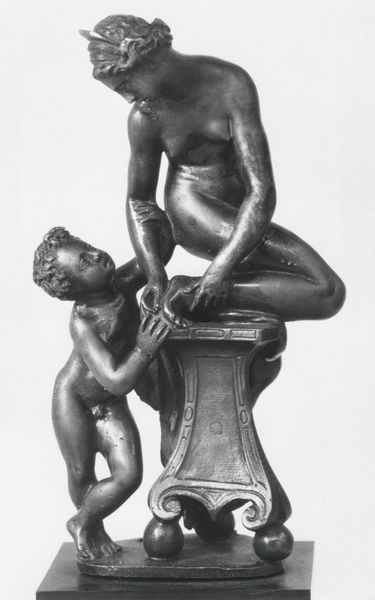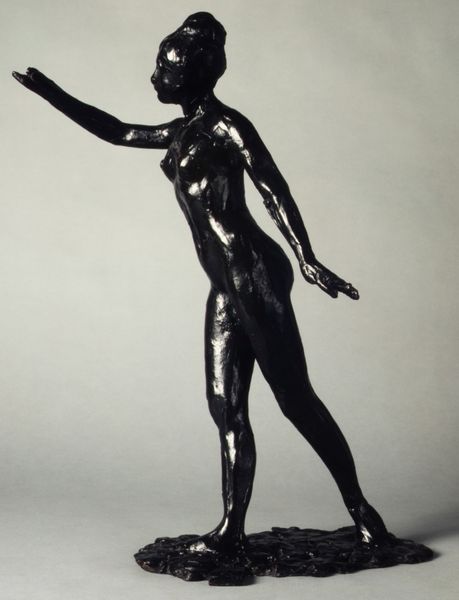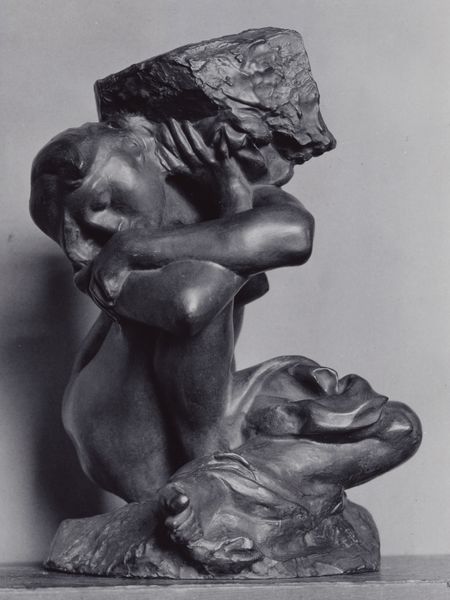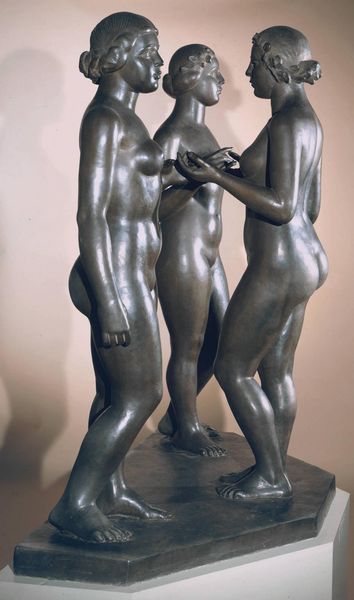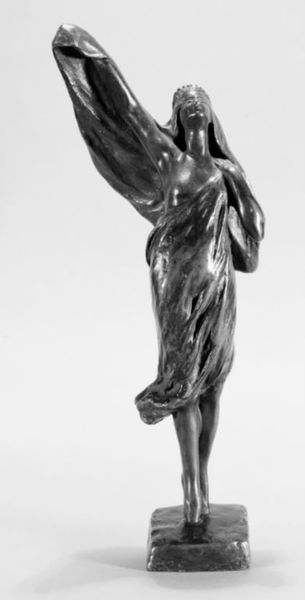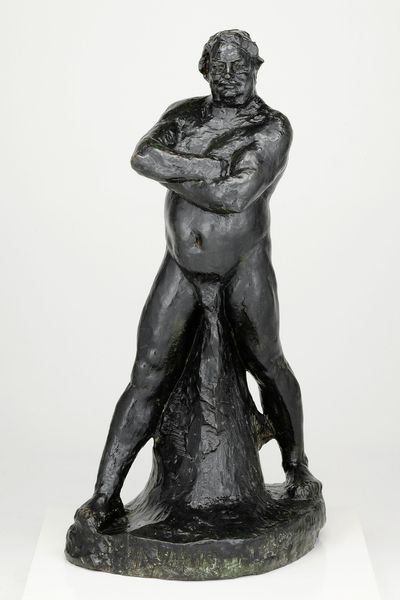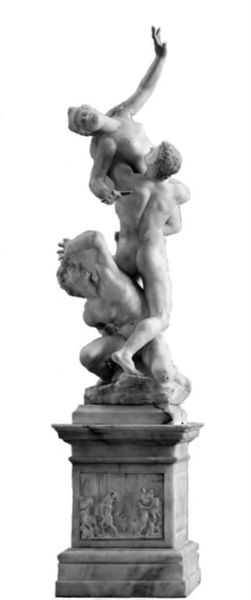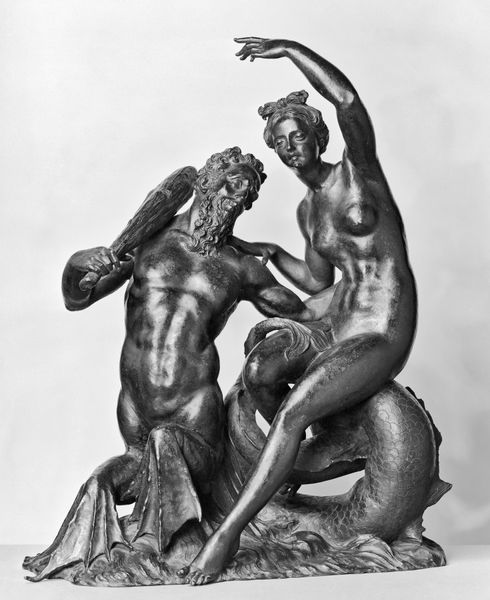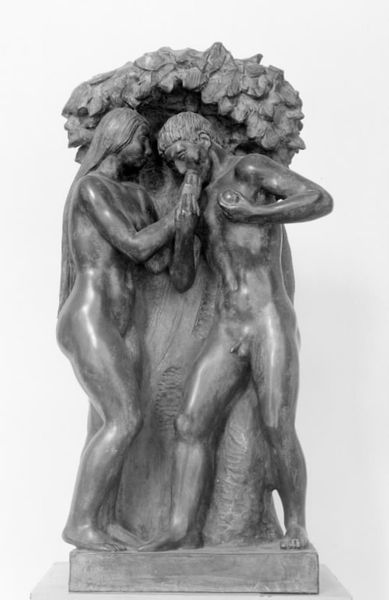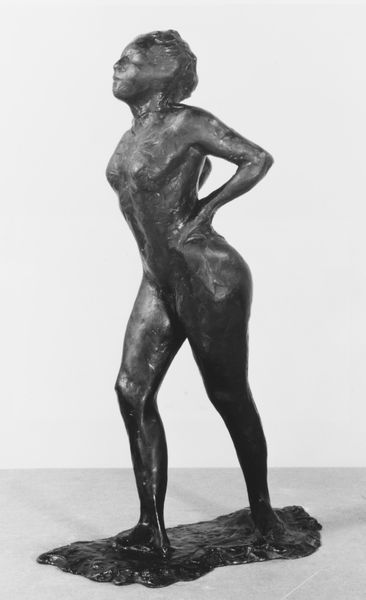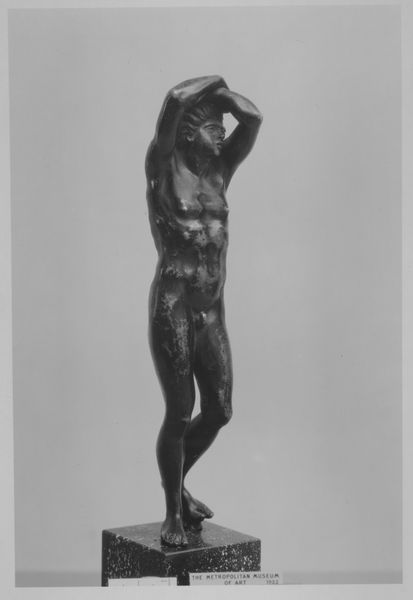
bronze, sculpture
#
baroque
#
sculpture
#
bronze
#
figuration
#
female-nude
#
sculpture
#
history-painting
#
decorative-art
#
nude
#
male-nude
Dimensions: Height: 8 in. (20.3 cm)
Copyright: Public Domain
Curator: At first glance, the figures in this bronze sculpture appear dramatically frozen mid-action. Editor: Yes, it’s Barthélémy Prieur's seventeenth-century sculpture, "The Rape of the Sabine Woman," currently held at the Metropolitan Museum of Art. But "rape" in this context is, of course, abduction, which changes our interpretation. Curator: Absolutely. Considering the social and political climate, how does the sculpture actively promote a certain ideal? I immediately question its romanticism, knowing the deeply problematic history it portrays. The female figure's upward gaze... is it really defiance or merely performative? Editor: The composition, with the man lifting the woman, places power firmly with the male figure. He strides purposefully forward, while she is carried and reaches toward the sky. How do we understand this power dynamic in light of gender relations? Curator: And further, what is the function of representing it so explicitly in the baroque style, so dramatic? It raises serious questions about spectatorship and who the sculpture was initially made for, what desires were catered to. The material itself, bronze, speaks to permanence, an attempt at mythologizing a historical event through artistry and design. Editor: We must recall the institutional role artwork had in shaping social discourse. Such images validated or perpetuated political positions regarding citizenship, expansion, and familial order. It prompts questions regarding the role art plays even today in justifying power imbalances. Curator: Exactly. Its mere presence asks how we recontextualize violent histories represented with classical elegance. We should scrutinize these aestheticized scenes of power imbalance, which forces dialogue about what we consider "beautiful" art. Editor: Thinking about this work has solidified the importance of interrogating art as both a product of history and an agent within social structures. Curator: I completely agree; this brief exploration illuminates the continued need for complex discussions in cultural spaces that prompt accountability when considering how historical events continue to echo today.
Comments
No comments
Be the first to comment and join the conversation on the ultimate creative platform.
